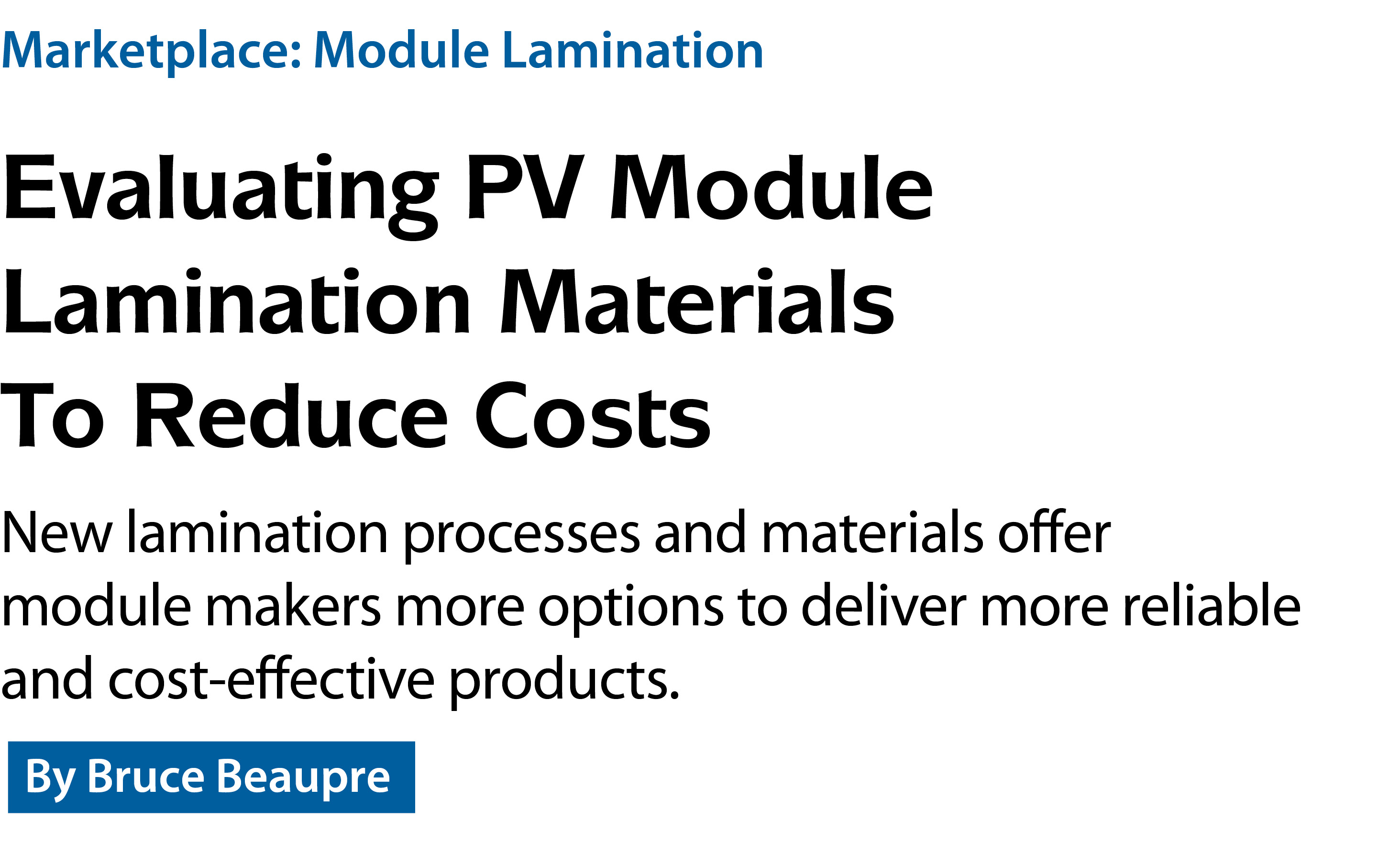

301 Moved Permanently
Backsheet components have evolved from the early days of photovoltaic module manufacturing and are now more effective than ever. Early constructions contained multiple fluoropolymer layers, which resulted in products that offered weather and ultraviolet (UV) protection but were very costly.
These constructions also utilized Tedlar, which could be difficult to source. Alternates in the marketplace, including Kynar, eliminated these concerns while helping to drive down costs. Market pressures eventually resulted in design changes in all components to reduce costs.
Currently, an array of PV backsheets is readily available. However, the key to making the most of these advancements is having a solid understanding of these options, as well as their applications.
The key selection criteria for PV backsheet materials are performance, availability and cost. Selecting the best option for a particular application requires an understanding of each of these variables to ensure you are using the right product for your project. The differences might seem subtle, but the right choice can help save time and money, while ensuring that the PV panels perform durably and reliably over time.
PV backsheet options
First developed for residential siding in the early 1960s, DuPont’s Tedlar (polyvinyl fluoride) film was the original film of choice for backsheet construction. Its proven history of solid performance in demanding indoor and outdoor applications quickly pushed it to the forefront where it became the preferred choice for backsheet film, complete with a reassuring 25-year warranty.
In the original backsheet construction, Tedlar was the “bread” of a two-layer material “sandwich” - two layers of Tedlar fluoropolymer film flanking one layer of polyethylene terephthalate (polyester) in the middle. The early thinking was that it took two layers of fluoropolymer (Tedlar-polyester-Tedlar) to provide more effective UV protection.
But gradually, two layers became regarded as a highly engineered and expensive product design. So, with fluoropolymer being the most expensive layer in backsheet construction and Tedlar becoming increasingly difficult to obtain, designers turned to other options, including a single layer of fluoropolymer and non-fluoropolymer designs.
Arkema offers a fluoropolymer called Kynar (polyvinylidene fluoride) that offers equal performance to Tedlar, yet without the supply constraints. For more than 40 years, the weatherable resin has been offering premium surface protection and outstanding longevity. The availability of Kynar film quickly established it as a highly popular alternative to Tedlar - both in double and single fluoropolymer constructions.
As a result of an ongoing effort, a non-fluoropolymer backsheet alternative using polyester and ethylene vinyl acetate has also gained acceptance for its adequate performance and greater affordability.
Innovation and evolution
The goal of the backsheet is to provide UV and moisture protection, electrical insulation, and some degree of durability. Technology advances, coupled with changes in International Electrotechnical Commission standards, have increased backsheet requirements.
Electrical insulation performance was mandated to pass 1,000 V (DC) partial discharge, which meant a minimum backsheet thickness of approximately 300 mm. Today, it is common for manufacturers to test beyond the 1,000 hour damp heat requirement, thereby placing greater importance on the durability of laminating adhesives.
As the current demand for backsheets has increased, the need for lower-cost/higher-durability options has intensified. Today, design engineers can select from three different types of backsheet material constructions:
- Double fluoropolymer: The original backsheet component construction is, as might be expected, at the top of the price scale. Typically, double fluoropolymer is available as either double layers of Tedlar or double layers of Kynar. The two polymers are similar in their outstanding performance.
- Single fluoropolymer: Developed as a more affordable option, single fluoropolymer provides excellent performance and durability - contrary to what early thinkers believed - with just one layer of Tedlar or Kynar. It has quickly become the construction of choice for the majority of applications.
- Non-fluoropolymer: The most affordable option is non-fluoropolymer, which has steadily grown in popularity as module manufacturers migrate to more cost-effective alternatives. It is quickly gaining in popularity not only because it is economical, but also because of its sufficient performance and ability to support varying warranties.
With the evolution of polymeric solutions, there are now an increasing number of options for photovoltaic projects. For example, Kynar has proven to be a high-quality backsheet component that offers reliable long-term performance in the form of excellent gloss retention post-UV exposure, long-term weathering protection and in-field durability. It is also readily available in multiple film thicknesses and roll sizes and can be easily processed, laminated and converted.
Backsheet materials have come a long way over the years, and today’s manufacturers are more dedicated than ever to staying ahead of market demands by delivering new offerings that meet their customers’ needs. R
Marketplace: Module Lamination
Evaluating PV Module Lamination Materials To Reduce Costs
By Bruce Beaupre
New lamination processes and materials offer module makers more options to deliver more reliable and cost-effective products.
si body si body i si body bi si body b
si depbio
- si bullets
si sh
si subhead
pullquote
si first graph
si sh no rule
si last graph